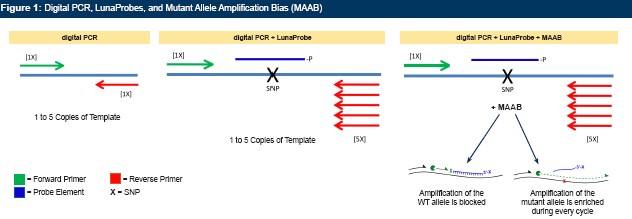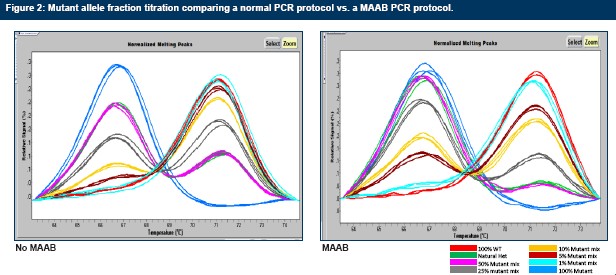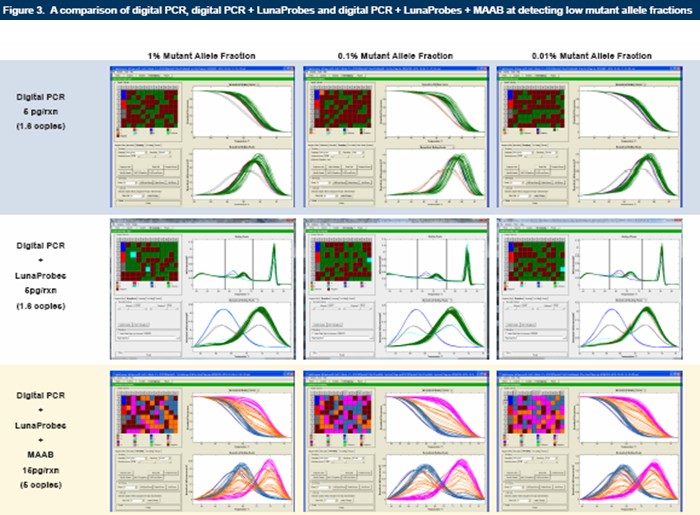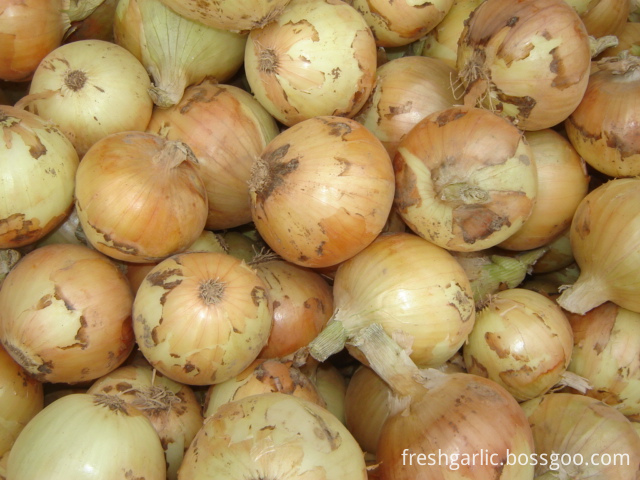Digital PCR, LunaProbesTM and MAAB combine to detect mutations in alleles below 0.01%
Digital PCR, LunaProbes TM and MAAB combined alleles can be detected less than 0.01% of mutant
Matt Poulson, Jason McKinney
Idaho Technology, Inc. Salt Lake City, Utah, USA
introduction
The detection of low levels of mutations has prompted the development of many new methods. We combine three existing technologies: digital PCR, unlabeled probes, and MAAB (biased amplification of mutant alleles) (see Figure 1). Digital PCR (Vogelstein and Kinzler, 1999) requires many replicate samples to dilute the template to about 1 copy/reaction. A number of improvements to the original digital PCR were performed to perform high resolution dissolution curve analysis (HRM), which required template dilution to 5 copies/reaction (McKinney, 2007). This indicates that if a mutant allele is present, at least 20% of the alleles are included in one reaction and the presence of a heteroduplex can be detected. Usually the sensitivity of digital PCR detection is about 2%. And the sensitivity can be increased, which depends mainly on the number of repeated tests. The non-labeled probe method adds a 3'-end blocked non-labeled oligonucleotide to the PCR reaction (Zhou, 2005). In addition to scanning when using HRM instruments, unlabeled probes add to the function of genotyping (see Figure 2). The sensitivity of unlabeled probes is approximately 5% (Wall, 2007). MAAB uses non-labeled probes to increase stability, the probes are perfectly matched to the wild-type alleles, and the mutant alleles do not exactly match, allowing the mutant alleles to be amplified preferentially. The sensitivity of MAAB can be less than 1% (McKinney, 2009). In this experiment, we combined these three methods to increase the sensitivity and effectiveness of HRM.

Materials and Method
A SNP was present in the phenylalanine hydroxylase gene 11 exon (PAH x 11) and detected using standard unlabeled probe methods. Two allelic homozygous samples were identified. The wild-type and homozygous mutant samples were normalized to a concentration of 15 ng and then mixed for a series of dilutions, with the mutated allele being 0.01%. The 1%, 0.1%, and 0.01% allele samples were then serially diluted to 5-100 copies. Thereafter, the 1%, 0.1%, and 0.01% mutant alleles were tested using 96-well plates using digital PCR, digital PCR + unlabeled probes, and digital PCR + unlabeled probes + MAAB. Each experiment included two replicates, 100% wild type and 100% mutant samples each reacting 15 ng and two untemplated controls. The method of MAAB and digital PCR + non-labeled probe + MAAB was carried out using an Eppendorf Realplex 4 Master Cycler Pro S (Eppendorf, Westbury, New York) at an annealing temperature of 57 ° C. The Eppendorf instrument has a temperature conversion rate of 6 ° C / s. The rapid rate of temperature rise is critical to the completion of PCR for MAAB experiments. The rapid temperature-increasing rate probe binds tightly to the region of interest during PCR annealing, effectively blocking the extension of wild-type allele primers. The rapid rate of temperature increase also reduces the amplification of the wild-type allele, and after melting the probe and the wild-type allelic strand, the time to amplify the enzyme of the WT allele is reduced during the denaturation process. Digital PCR and digital PCR + non-labeled probes were run on a Bio-Rad IQ thermal cycler (Bio-Rad, Hercules, CA). The annealing temperature was 68 ° C and extended at 72 ° C to remove any allelic bias. Samples were amplified using LightScanner 96 for dissolution analysis (Idaho Technology Inc., Salt Lake City) (see Figure 2).

Results and discussion
The amount of template used for each reaction of the digital PCR was 5 ng (about 1.5 copies). Digital PCR can only analyze amplification peaks. Digital PCR can be successfully amplified at this dilution and a 0.1% mutation in the heterozygous sample can be detected. In experiments with other alleles, digital PCR was unable to detect any mutant alleles in the sample. The addition of the non-labeled probe method not only improves the sensitivity of the digital PCR, but also detects mutations after mixing each mutant allele. Digital PCR plus unlabeled probes and MAAB increased the ability to detect mutant alleles, 42 samples detected 1% mutation mix, 37 samples detected 0.1%, and 43 samples detected 0.01% ( See Figure 3). Although digital PCR using unlabeled probes and MAAB is a technically non-digitized template copy number, it is still smaller than the template amount of conventional PCR. MAAB increases the ability to detect mutant alleles in the context of high WT alleles. When the digital PCR and MAAB techniques with unlabeled probes used a template concentration of 300 pg (100 copies/reaction), the detection rate of the mutation was still 0.01% (see Figure 4).

in conclusion
There are many uses for detecting low levels of DNA mutations. These include detection of pathogen resistance, non-invasive prenatal screening, low levels of somatic mutations, and detection of other diseases after peripheral blood treatment. Combined with digital PCR, the sensitivity of unlabeled probes and MAAB can be increased by 10-100 fold, and the specific alleles can be determined by specific probe peaks, which can reduce the cost of sequencing.
From the month of May, the new crop of onion from Jinxiang has harvested. After dried enough, the Yellow Onion can be packed and shipped from the month of June. The new crop Fresh Onion has very beautiful appearance and great quality. Jinxiang is a famous county which has large area planting garlic and onion.
1. Commodity name: Fresh Onion
2. Feature: Natural color, Thick and full skin, No stain and soil on outer skin, Firm and no rotten.3. Size: 3.0-5.0cm, 5.0-7.0cm, 7.0-10cm
4. Variety: Yellow Onion and Red Onion
5.Packing:
1) 10kg/carton, 20kg/carton, 10kgs/mesh bag,20kg/mesh bag and 25kgs/mesh bag
2) or according to the clients' requirements.
6. Supply Period:
A) Fresh season: May to the middle of August
B) Cold storage season: August to December.
7.Conveyance:26-30MT/40'HR (loading quantity depending on packing)
8.Transporting and storing temperature: 0°C -+1°C

Yellow Onion
Yellow Onion,Fresh Yellow Onion,Organic Yellow Onion,Yellow Round Onions
JINING FORICH FRUITS & VEGETABLES CO., LTD. , https://www.forichgarlic.com